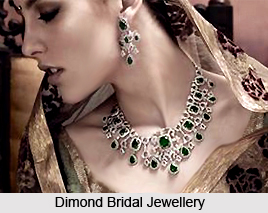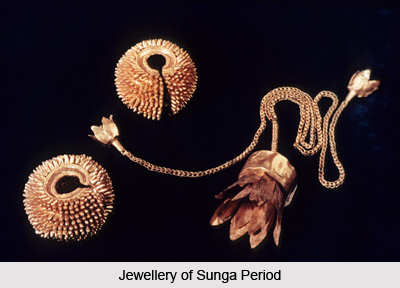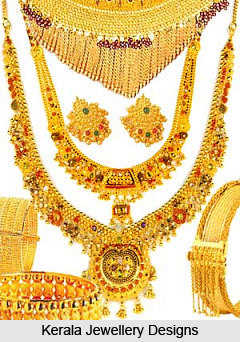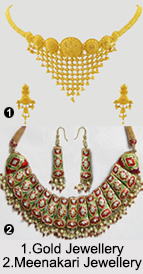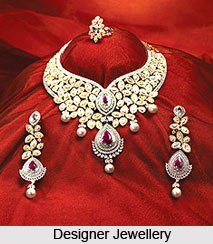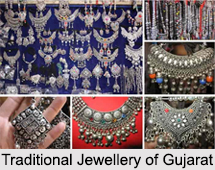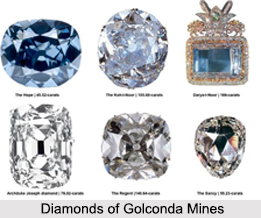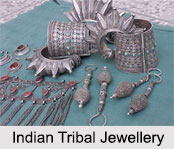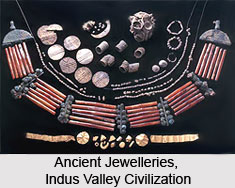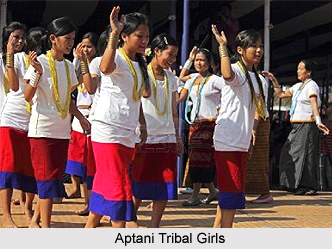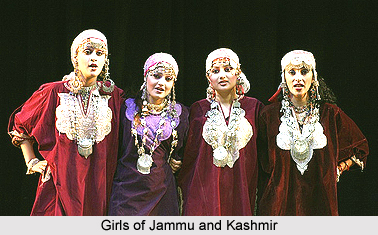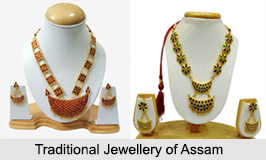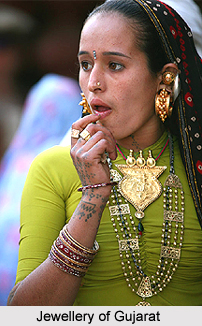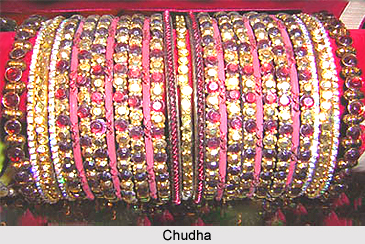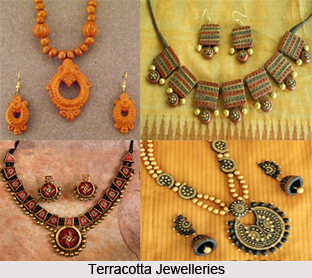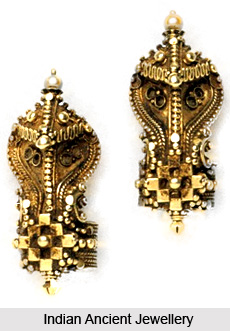 Indian traditional jewellery mirrors designs that date back to centuries ago. The exquisite pieces reflect the excellent craftsmanship of the jewellers. Often made out of gold the Indian traditional jewelleries are heavy and have intricate designs. These designs vary with regions. For instance the designs of traditional jewelleries from South India echo the temple motifs. On the other hand the north Indian jewelleries flaunt carved designs. The traditional jewelleries of East India are known for their bead works and West India is home to the brilliant stone studded pieces of ornaments. Earrings, nose rings, toe rings, necklaces, waistbands, armbands, anklets, bangles and others comprise the Indian traditional jewelleries.
Indian traditional jewellery mirrors designs that date back to centuries ago. The exquisite pieces reflect the excellent craftsmanship of the jewellers. Often made out of gold the Indian traditional jewelleries are heavy and have intricate designs. These designs vary with regions. For instance the designs of traditional jewelleries from South India echo the temple motifs. On the other hand the north Indian jewelleries flaunt carved designs. The traditional jewelleries of East India are known for their bead works and West India is home to the brilliant stone studded pieces of ornaments. Earrings, nose rings, toe rings, necklaces, waistbands, armbands, anklets, bangles and others comprise the Indian traditional jewelleries.
The history of Indian jewellery can be traced back to the ancient civilisations. In fact jewellery was the symbol of power, richness and class for the prehistoric and historic rulers. So from there it has been conceived that the craft of jewellery received royal patronage because in India jewellery is considered to be much more than just a tool of aesthetic appeal. Jewellery in India is believed to be the symbol of divine copiousness and material blessings. Since prehistoric times, Indian jewelleries have been fashioned in different mediums like country-seeds, feathers, leaves, berries, fruits, flowers, animal bones, claws and teeth. The ruins of Mohenjodaro and other sites of the Indus Valley civilization bear evidence to this dexterity.
However with time the materials used to make ornaments changed. Finally gold and silver were two popular metals extensively used to make jewelleries in India. The designs of Indian traditional jewelleries also reflect the cultural amalgamations. For instance the art of meenakari was introduced by the Mughals. This enamelling work is now widely used to decorate the Indian ornaments. One of the most elegant pieces of jewellery is the necklace. It is an accessory or jewellery that is worn around the neck. Indian necklace carries a lot of conventional and sentimental value.
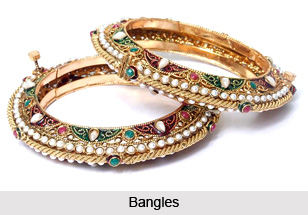 For an Indian lady her jewellery box is incomplete without traditional necklaces. Necklace, however, can be of different types like Beaded silver necklace, tribal necklace, stone beaded necklace, beaded necklace, bone necklace, pearl necklace, gold necklace, lacquer necklace, pearl gold necklace, kundan sets, white metal necklace, jadau sets and others.
For an Indian lady her jewellery box is incomplete without traditional necklaces. Necklace, however, can be of different types like Beaded silver necklace, tribal necklace, stone beaded necklace, beaded necklace, bone necklace, pearl necklace, gold necklace, lacquer necklace, pearl gold necklace, kundan sets, white metal necklace, jadau sets and others.
Besides this earrings also come in different varieties like Stud earrings, Hoop earrings, Dangle earrings or `jhumka`, slave earring, Clip-on earrings, ear cuff, Magnetic earrings and Stick-on earrings. Mangalsutra is regarded as `a sacred thread of love and goodwill worn by married women as a symbol of their marriage`. It is tied up by the groom around the neck of the bride. Another traditional piece of Indian jewellery is the nose ring. During the 16th Century, Indian women adopted the practice of wearing nose rings. The practice took place in India with the arrivals of the Mughals. Even today this is a popular ornament. Toe ring, on the other hand, is an essential ornament for married women. Usually made of silver and stone studded toe rings are worn women across India.
Other pieces of jewellery include the armlet. In India, armlets are popularly known as Baju Bandh. Baju Bandhs are the traditional forms of jewellery that is even today considered extremely trendy. The armlets are usually made in shapes of creepers, snakes, and crocodiles with crude metal. Besides these there are the bangles. These are made circular in shape and are made out of gold, silver and glass. In certain parts of India glass bangles are symbols of married women. Meenakari works are other stone works are quite popular on gold bangles.
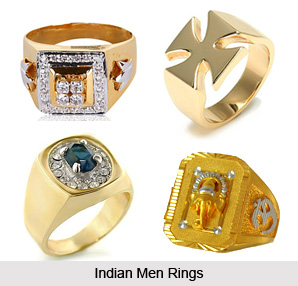 Bracelets are ideal for any occasion or daily wear. It is a very popular piece of jewellery usually worn around the wrist. Bracelets can be differentiated in various types like, leather bracelets, metal bracelets, lac bracelets, glass bracelets, plastic bracelets, shell bracelets, wooden bracelets, bone bracelets, stone bracelets, terracotta bracelets, jute bracelets, ivory bracelets. Pendants are available in varying shapes and sizes in both gold and silver. Diamond or platinum pendants are also popular in contemporary India. Amongst Indians the ones like Zodiac sign pendants, numerology pendants, Rudraksh pendants, birthstone pendants, etc. are the most sought after.
Bracelets are ideal for any occasion or daily wear. It is a very popular piece of jewellery usually worn around the wrist. Bracelets can be differentiated in various types like, leather bracelets, metal bracelets, lac bracelets, glass bracelets, plastic bracelets, shell bracelets, wooden bracelets, bone bracelets, stone bracelets, terracotta bracelets, jute bracelets, ivory bracelets. Pendants are available in varying shapes and sizes in both gold and silver. Diamond or platinum pendants are also popular in contemporary India. Amongst Indians the ones like Zodiac sign pendants, numerology pendants, Rudraksh pendants, birthstone pendants, etc. are the most sought after.
Rings were used for a long period of time to adorn oneself. Centuries ago rings were made of crude metal or wood. Today, one can avail rings in just about any material and design. There are many types of Rings like, stainless steel, white metal, metallic rings, plastic rings, wooden rings, bone rings, glass rings, stone rings, and lac rings. Another Indian ornament is the chain. These beauteous pieces of costume jewellery can either be worn around the neck with a pendant or locket. These are often made of gold or silver. Anklets, silver hair adornments and others are also known pieces of Indian traditional jewellery.
In contemporary times the concept of jewellery has undergone several changes and has been enriched with the experimentations. Markets these days are flooded with jewellery that is the most coveted for the current generation. It looks very elegant, stylish as well as contemporary that suits the apparels of youngsters. Side by side traditional Indian jewellery sells like hot cakes. In India, almost every household has good collection of traditional jewellery. These are mostly used during special occasions like marriages, birthdays, festivals, etc.


